At the entrance of Derek Jarman: PROTEST! the image of a glistening, blood red heart throbs from a large painting. Across its centre a scrawled word ‘QUEER’ can be just made out, its letters appearing as if scratched by fingernails. Bold, yet a symbol of vulnerability, a fitting motif for an unapologetic artist whose practice is synonymous with a visceral and fearless expression of life.
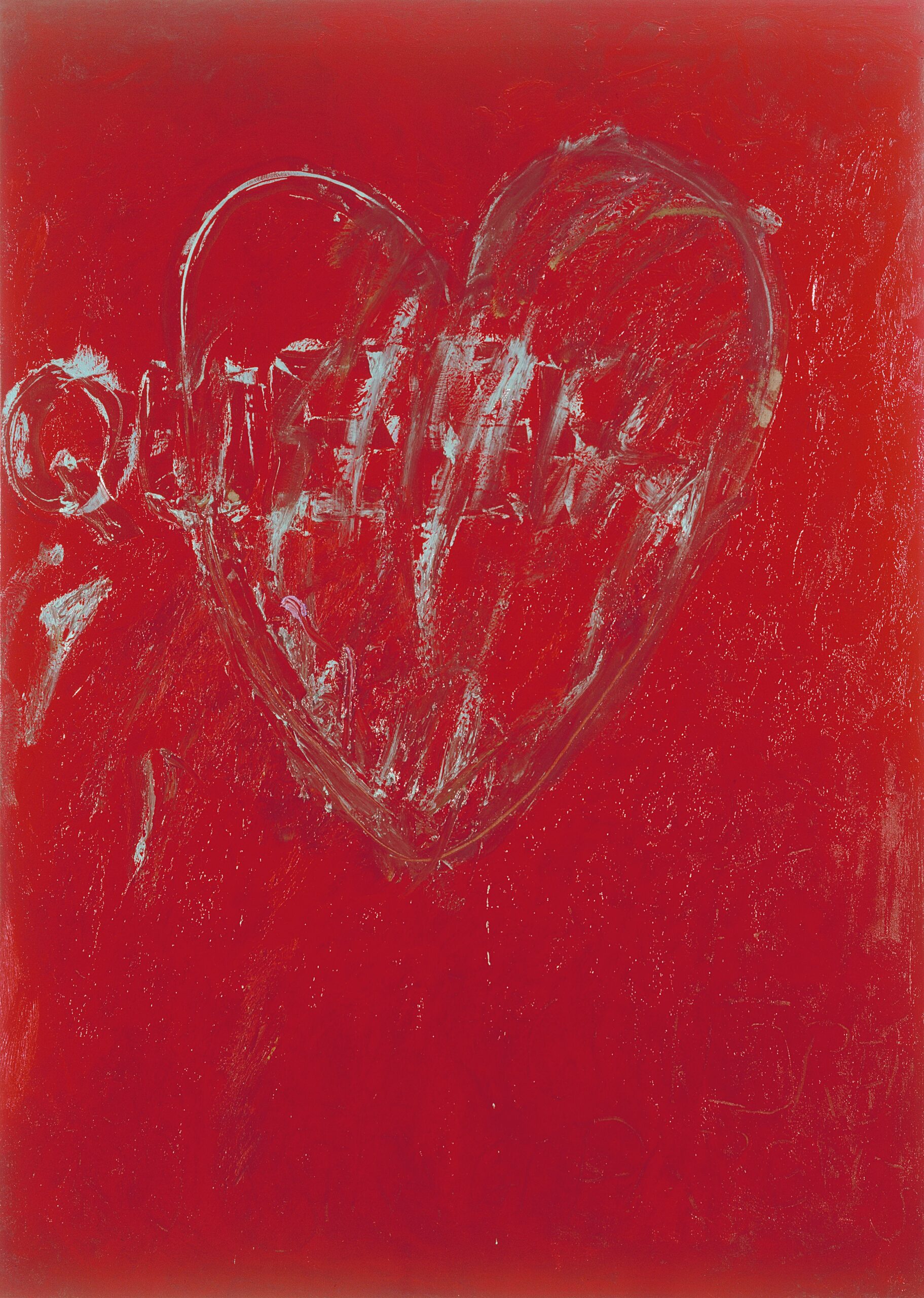
Queer, 1992, oil on canvas, 251.5 x 179 cm, Courtesy Manchester City Gallery.
Jarman’s approach to image making consists of a myriad of painting, filmmaking and writing, which feels raw and contemporary despite his untimely death (owing to an AIDS-related illness) being now nearly thirty years ago. The exposition of his passing casts a shadow of dramatic foreboding over this display, its gravity illuminating and contrasting with the urgent vivacity of his creations.
The layout of the exhibition is roughly chronological. The first room presents pieces from Jarman’s first exploratory forays into art making produced around 1960, including his time as a student at the Slade School of Fine Art. An early painting from 1959 shows a three-quarter self-portrait of a moody looking teenage Jarman, his black eyes gazing disconcertingly off-centre.
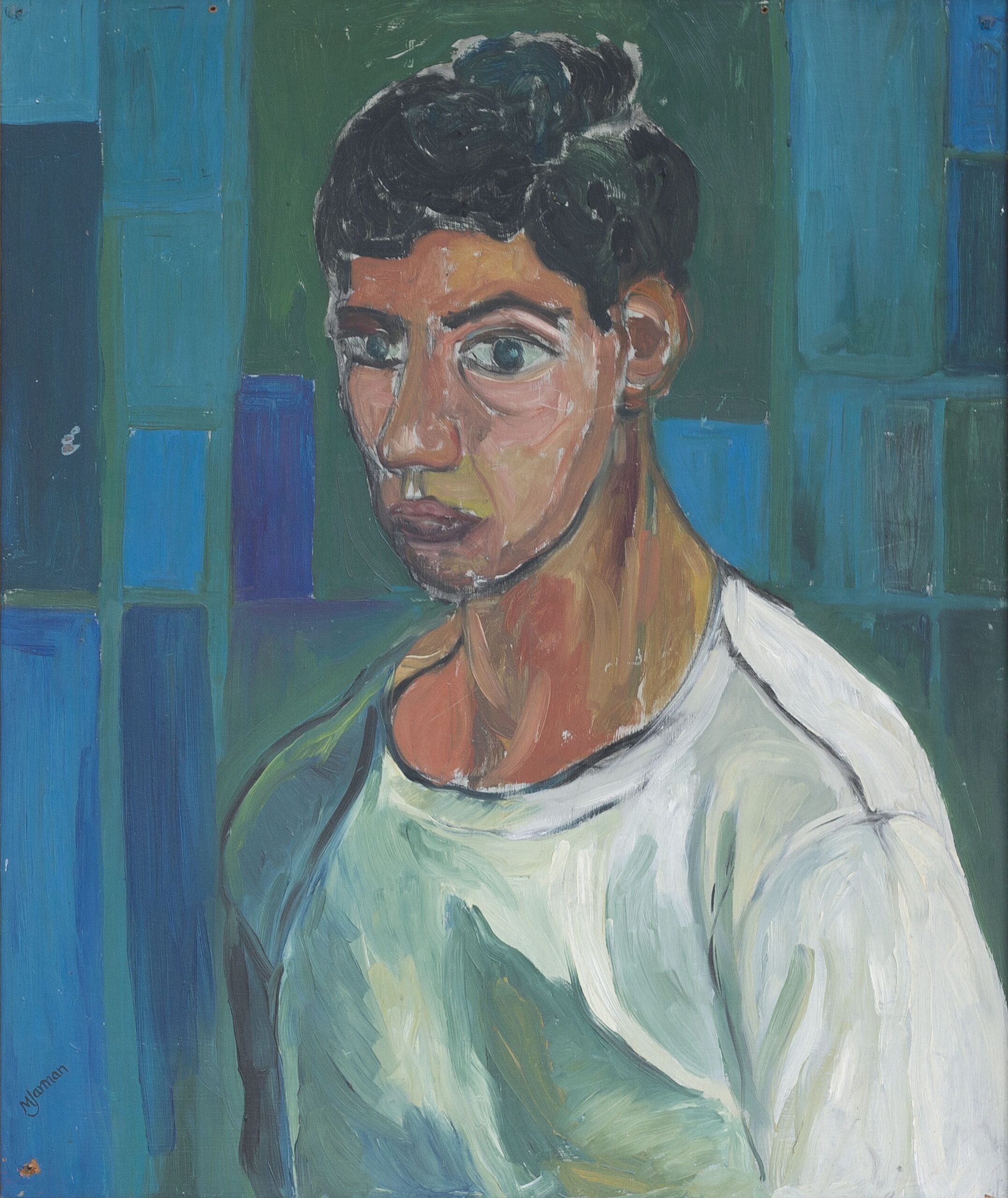
Self-portrait, Oil on canvas, 76.2 x 63.5 cm, 1959, Private collection.
Rendered with ‘Schiele-esque’ brushstrokes it’s exquisitely tender but belies the inner confidence and talent of the nascent artist. Jarman was a magpie for adopting different stylistic techniques and his influences are a romp through the cannon of Painting. Everyone from the early classical greats such as Poussin are felt alongside Abstract Expressionists like Jasper Johns. These first works give a sense of Jarman aggregating artistic stimuli at a frenetic pace, the tangible excitement of a young man casting off. The impulsive, electric wonder of fresh creative discovery never seemed to leave his practice, each period seemingly as formative as the next- demonstrating his ability to transmogrify into new modes self-expression. The levity shown in the work is made even more incredible when considering of the oppressive context of violent homophobia in which Jarman came of age.
From the Watford Advertiser 1960, with myself portrait painted 1959.
By the late 1960s and early 70s Jarman had moved from figuration into more mystical realms. Paintings such as Landscape with marble mountain, 1967 present a large lime-green colour field onto which topographic ley lines divide the composition into some kind of gnostic map.
A small segment of photograph, showing some kind rock face, adds texture and further narrative intrigue. The painting illustrates an artist who is also an alchemist, nimble enough to play with the formalism of pared back Abstraction and to weld its components into the architecture of a story. Looking at these works, it is not surprising that during this decade Jarman was also cutting his teeth as a filmmaker. Landscape with crow, c.1967 further exemplifies his theatrical utilisation of symbols, a magic sensibility for creating visual and cerebral cohesion. In it, an ominous crow stoops on a lonely perch, his roost being a pyramid balanced on an orb. Across an expanse of greige dessert another pyramid teeters on the sparse horizon line. A mixed media object (a towel holder perhaps?) has been mounted to the front face of the canvas casting an even ‘greiger’ shadow, a perfect oval that seamlessly morphs its turgidity as you walk past the picture plane to innovative effect.
In a dim, semi-enclosed area of the gallery Super 8mm music videos directed by Jarman are projected. The videos include several iconic British pop songs; namely The Smiths: There Is a Light That Never Goes Off, 1986, The Queen Is Dead, 1986 and The Pet Shop Boys: It’s a Sin among others. Watching the flickering amalgamation of recycled images; disorientating fragments of urban decay shredded together with solarised roses, quasi-religious iconography and grungy yet gorgeous young faces, paired with the lilting, yearning lyrics is a near beatific experience. Resonate of Jarman’s feature films the videos have an epic melodrama to them. They are otherworldly, simultaneously gritty and sweepingly romantic.
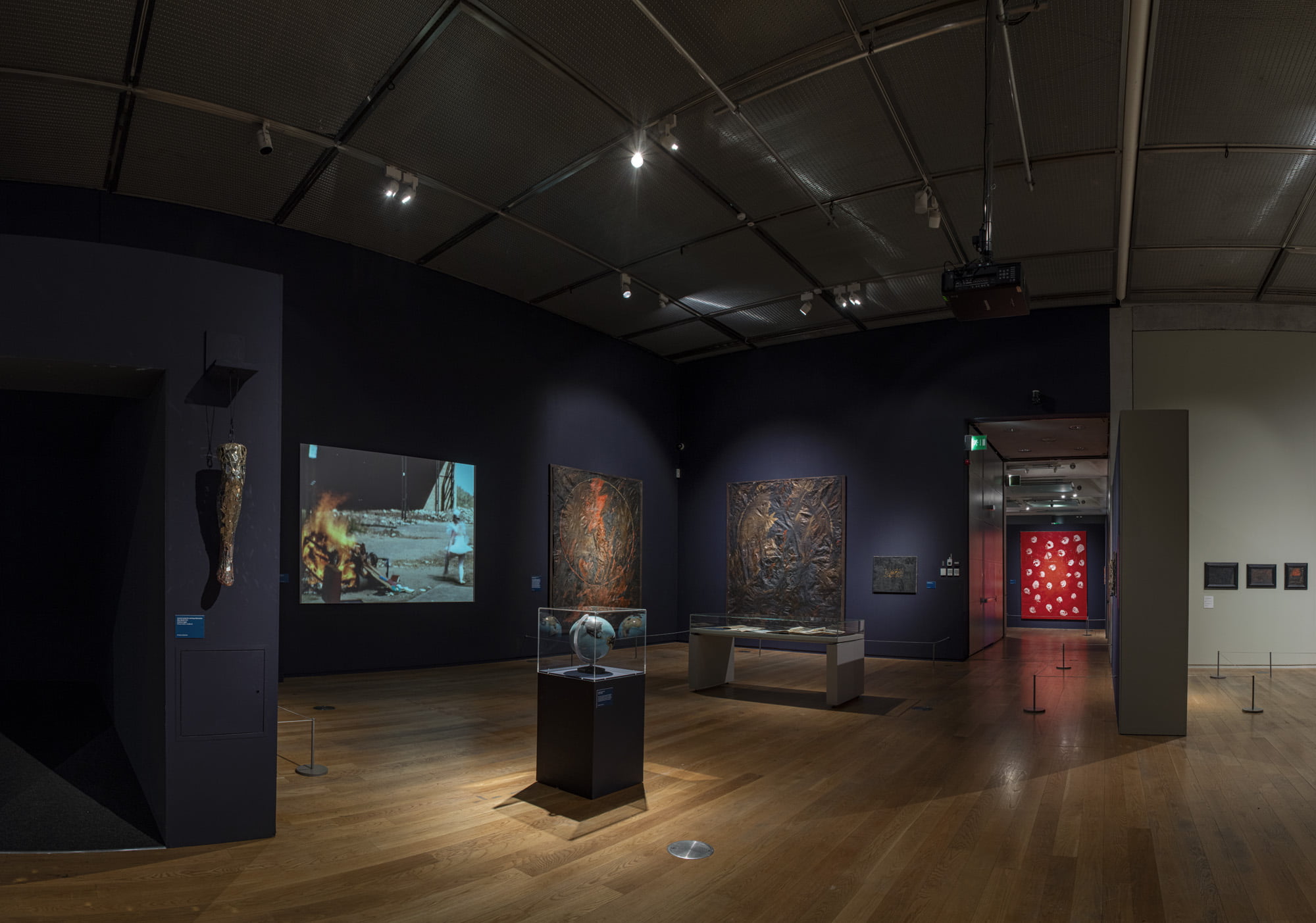
Derek Jarman PROTEST! Manchester Art Gallery – installation view (Credit: Andrew P Brooks)
A collection of Jarman’s so-called ‘Black Paintings’ hang nearby, produced during the same period in the 1980s that he was researching his feature film Caravaggio. Imposingly large and textured like the skin of a hunted animal, the paintings employ the dramatic chiaroscuro technique (the use of strong contrasts between light and dark) and depict figures in Pietà configurations alongside explicitly sexual imagery. The paintings are metaphors communicating the extreme anguish and persecution Jarman felt living as a gay man in hostile Thatcherite Britain.
A more jubilant expression of queer culture is seen in the artefacts and documentation of Jarman’s participation in Alternative Miss World; a private parlour game developed with close friend Andrew Logan to show-off their homemade drag personas which snowballed into a full blown extravaganza. It was a truly radical project given that at the time, drag was just a tiny piece of glitter in the eyes’ of the mainstream. One photo shows an exquisite cape designed by Jarman.
It is made out of a clear shower curtain and embellished with small pieces of junk metal, as if purloined from a shed floor. Its playful, funny and majestic appeal makes the heart exult to look at it. This DIY exploration of self-identity and expression of self-hood is a murmur to future YouTube and Instagram stars which are ubiquitous today, but that stand on radical foundations consecrated by artists like Jarman, who were courageous enough to go against the grain and simply be open about their lived experience.
In December 1986 Jarman was diagnosed as HIV positive and was one of the first public figures to candidly talk about it. Some of the last paintings he produced such as Fuck Me Blind, 1993 feature cutting, angry slogans around the theme of HIV. In spite of the obvious pain and vitriol he felt, often furiously focussed on political figures- there is still a deep joy to be found in the work, a roar of defiance in the darkness.
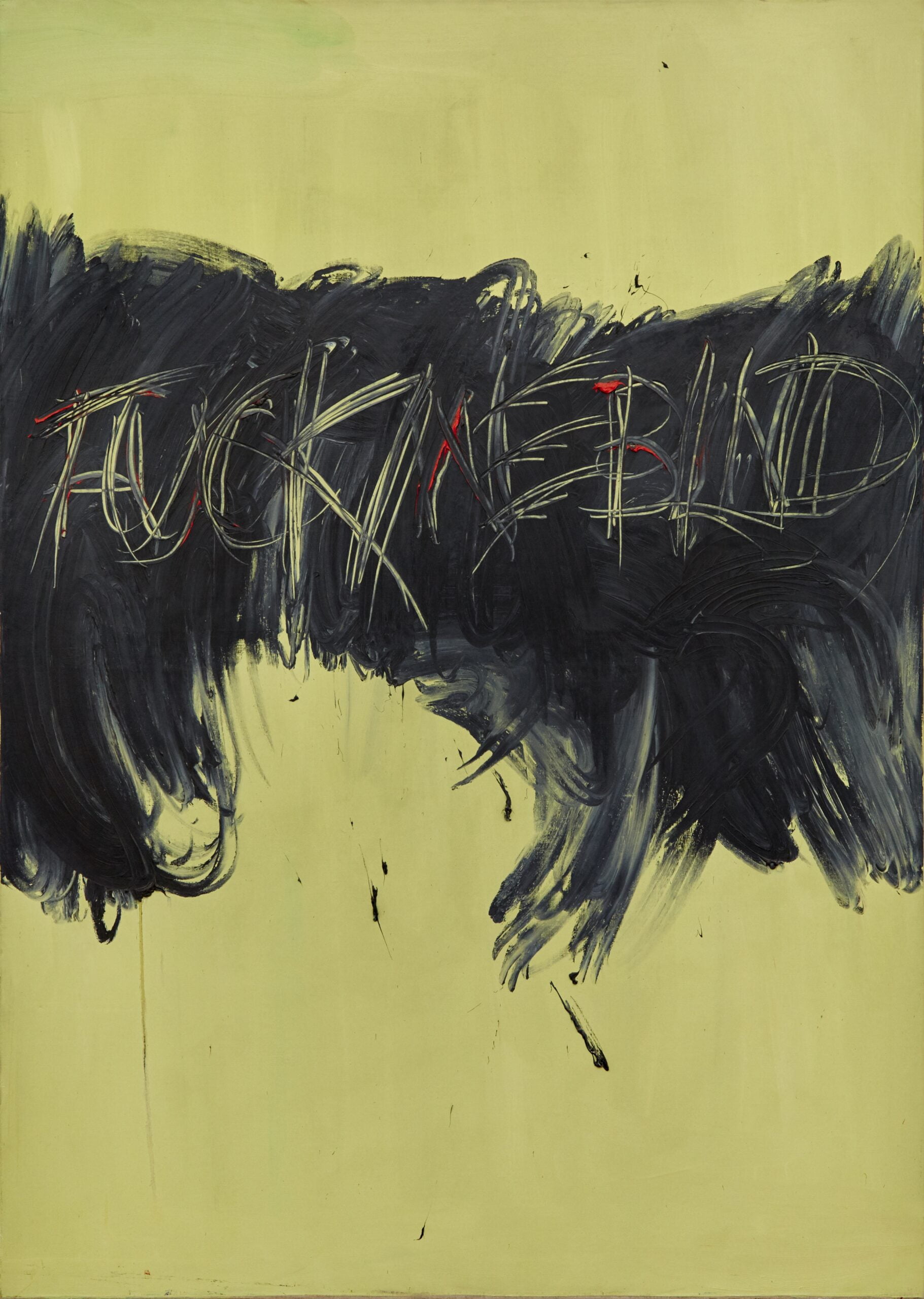
Fuck me blind, 1993,Oil on canvas, 251 x 179 cm, Courtesy Amanda Wilkinson Gallery.
The final room in the exhibition takes is more contemplative and focuses on the final stages of Jarman’s life, lived out at Prospect Cottage in Dungeness where he cultivated a garden. A vitrine displays a notebook in which a diary entry describes a hugely alarming disturbance at the nearby nuclear power station in 1990. In beautifully handwritten, level script, he describes with wit and erudition what he thought may be an imminent catastrophic disaster. The fragment of writing exemplifies his character. A hugely intelligent, charming man who had the fortitude and talent to candidly communicate even under the most pressurised scenarios to radical ends.
PROTEST! is a major retrospective of the hugely influential artist and film maker Derek Jarman (1942-1994) at Manchester Art Gallery, Mosley Street, Manchester, M2 3JL. Originally presented at IMMA, Dublin curated by Seán Kissane, the exhibition was re-presented at Manchester Art Gallery by Curators Fiona Corridan and Jon Savage
The exhibition runs until Sunday April 10th 2022 and is free to enter.
Filed under: Art & Photography
Tagged with: abstract, art, artist, bold, exhibition, film, hiv, Identity, lqbtq+, manchester, painting, queer, self portrait
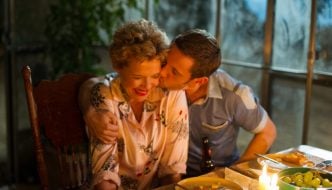
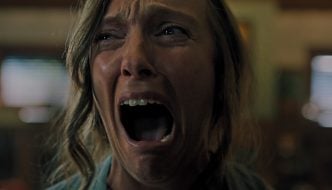
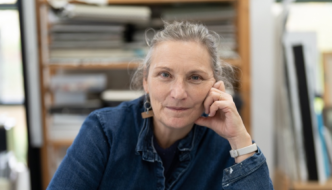
Comments